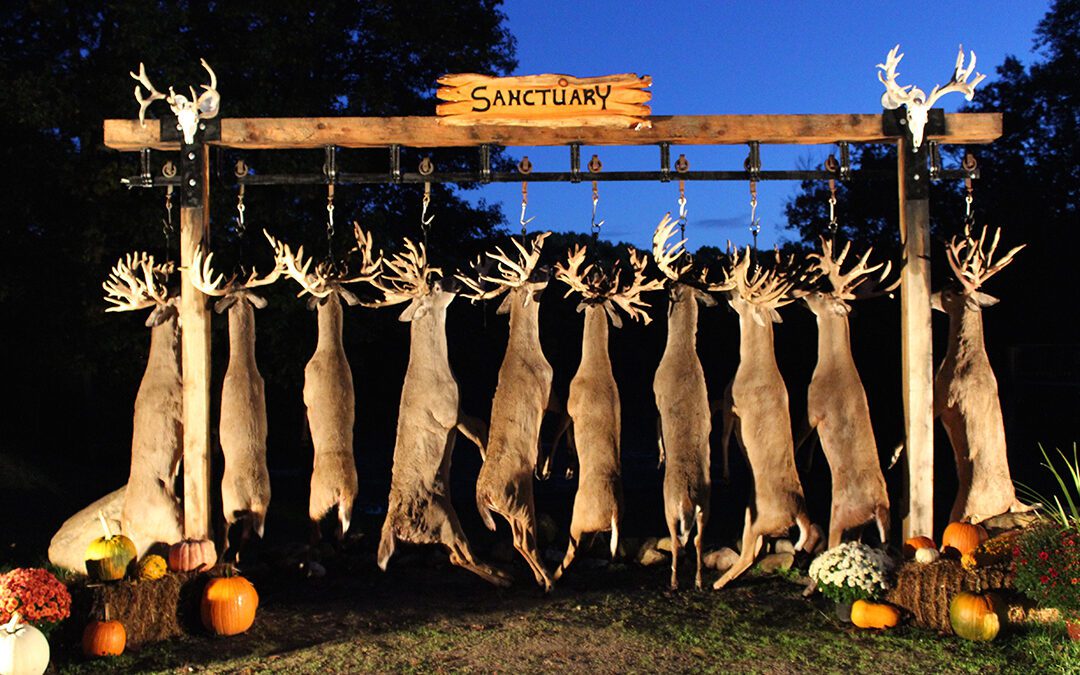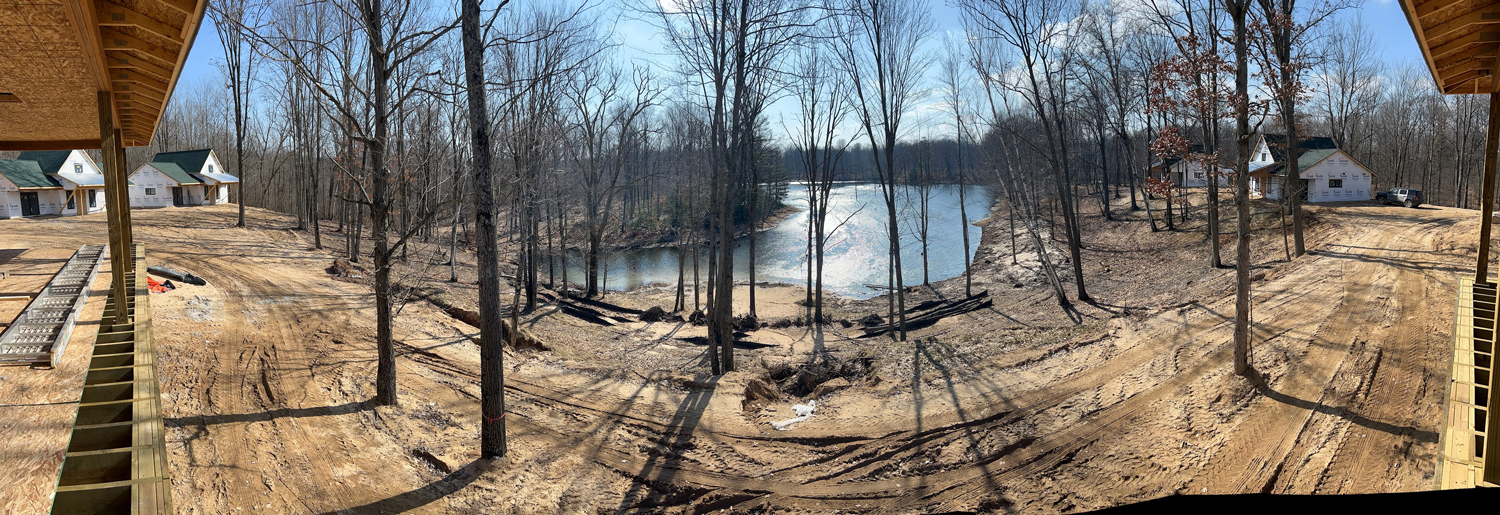
The biggest feature of our investment is the acquisition of more than 500 new acres of pristine hunting land. We’ve added lakes and streams, gorgeous rolling timberland, and wildlife habitat, beautiful wetlands, thick cedar swamps, timber slash and dozens of scattered food plots.
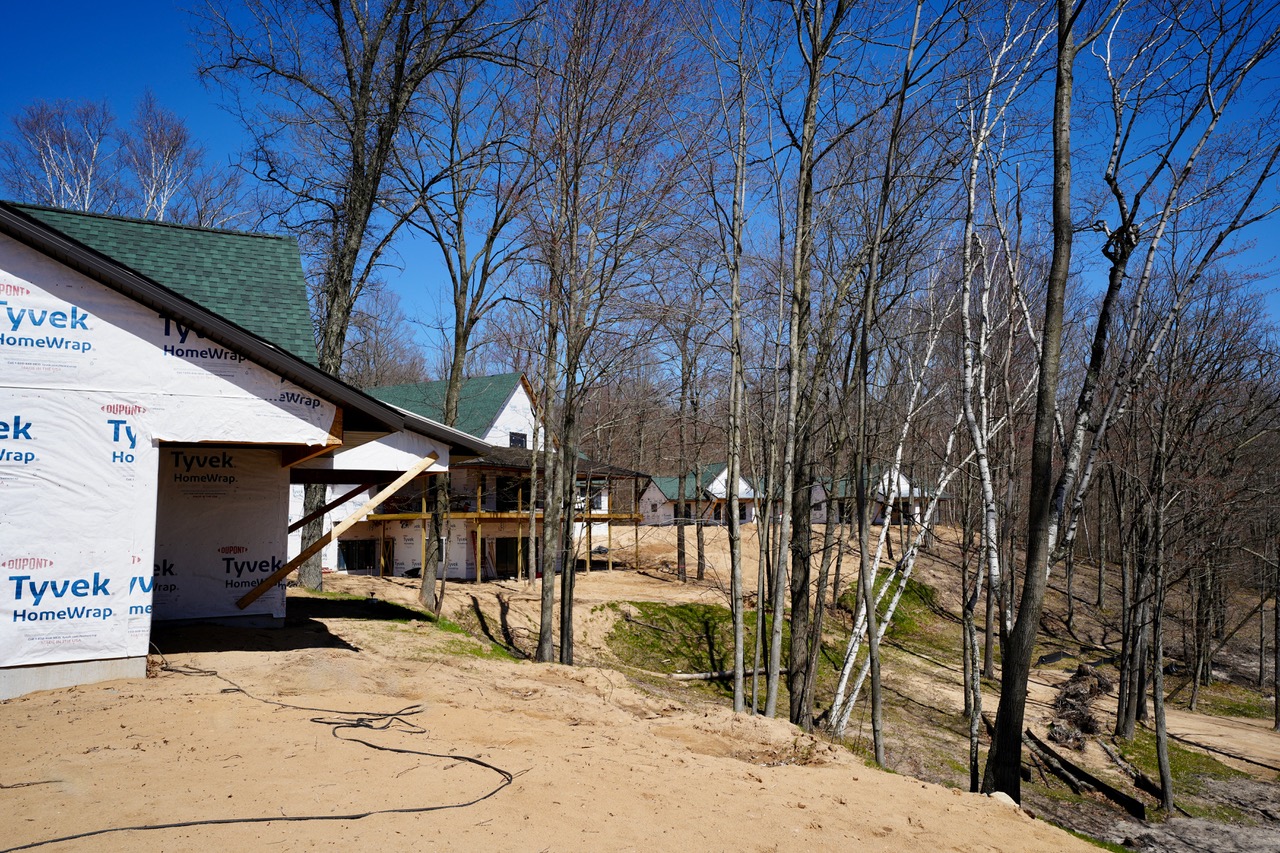
Other amenities include a new gym, spa services, sauna and a shooting range.
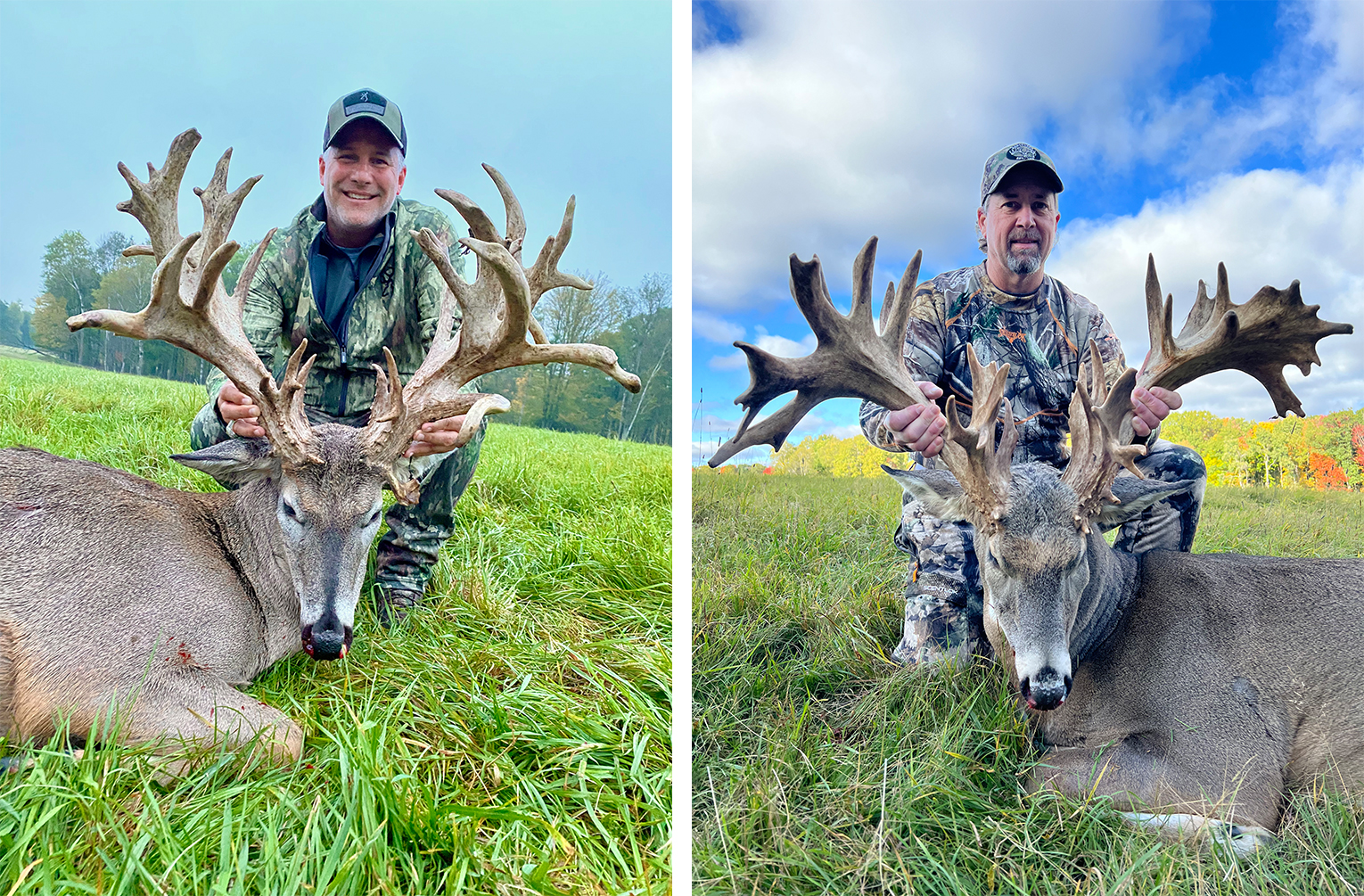
What has been steadily changing over the years are the sizes of our whitetail racks. Sanctuary hunts are reserved for those hunters who seek record-worthy harvests. A gold medal hunt is considered a whitetail hunting fantasy without equal. Genetically enhanced, nutritionally perfect and fully mature, the bucks at Sanctuary are the deer of your dreams. When you set foot on our ranch, you will be entering a distinguished trophy environment.
So why, with all these changes and new additions, are we featuring Chuck Wechsler’s article, which appeared in Sporting Classics way back in 2006?
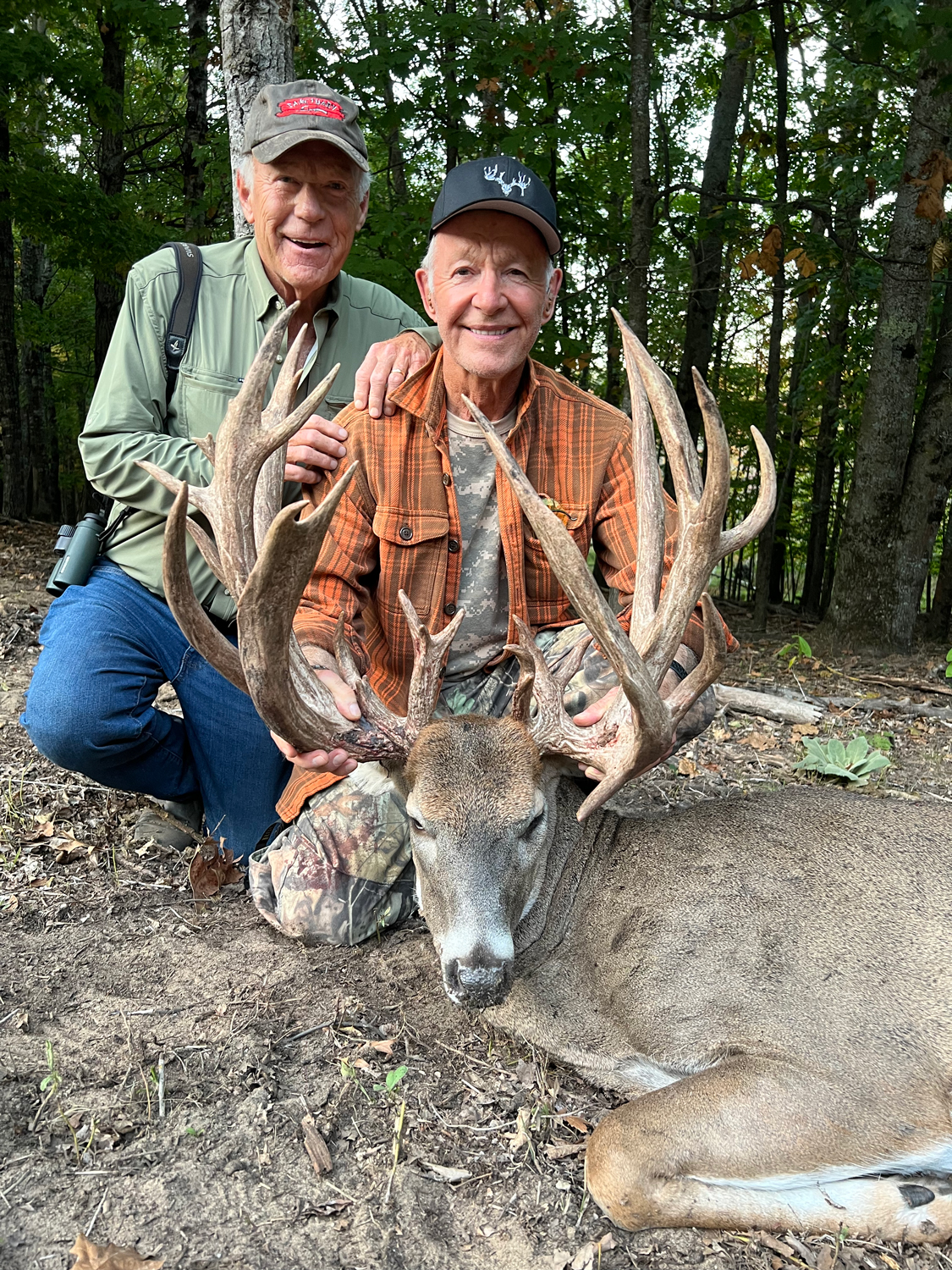
First off, the story is a fitting tribute to my father, Pat, who founded Sanctuary in 1978 and who shared Chuck’s deer blind over the duration of his successful hunt. It’s also a tribute to some things that will never change at Sanctuary: The thrill of seeing a monster buck suddenly step from the woods and into the clearing in front of your stand. The pleasure in hunting with our professional and experienced guides. The joy in dining on superb meals created by a professional chef. The satisfaction in making new friends with hunters who share your passion for pursuing trophy deer. And finally, that immeasurable feeling of pride when you pose with other hunters next to a buck-pole holding a dozen giant whitetails. Welcome to Sanctuary.
— Ryan Bollman, General Manager
SEEKING SANCTUARY
By Chuck Wechsler
It’s a hunter’s haven—a magical place nestled in the North Woods, where dreams of giant bucks come true.
Everything I know about Pat Bollman and Sanctuary has come in whispered conversations against dark curtains of ancient cedars and oaks, with mysterious, mossy-horned bucks ghosting through the shadows.

For three memorable days in October, Pat and I shared quiet reflections and exhilarating sights at Sanctuary, the granddaddy of whitetail hunting operations in the North Country.
My flight into Traverse City had been late, and by the time I picked up my rental and made the hour-long drive, it was mid-afternoon before I arrived at Sanctuary’s gated entrance.
After a warm welcome from Pat and his cordial staff, we climbed into guide Jon Bruursema’s Ford 150 and headed off on a winding gravel road.
The drive to our stand didn’t take long, but I enjoyed every minute. The maples and birch trees were ablaze in color and tall columns of red, yellow and bronze formed a picturesque corridor as we wound through the forest. We parked the vehicle and after a short hike, we arrived at a cabin blind perched on 15-foot stilts, much like the spacious stands found on European estates.
As we settled into the blind, I was surprised to see several does and youngish bucks that had already gathered around a feeder on the far side of the meadow. As we waited for something bigger to show up, Pat began to relate the story behind Sanctuary and his long love affair with the white-tailed deer.
The first thing I learned is that Pat Bollman is the perfect companion for spending long hours in a deer blind. Quick-witted and quick to smile, he exudes a boyish enthusiasm when he talks, and it seems that whatever he had to say was both interesting and entertaining.
I also discovered that Pat and I shared similar deer-hunting experiences—frustrations—while growing up in the North Woods, Pat in Michigan and me in Minnesota. Back in the 1950s and ’60s, all across the Snowbelt States opening weekend of deer season triggered an avalanche of red-clad hunters who tagged any whitetail that crossed their sights, but mostly does and young deer. Meanwhile, the mature bucks, those that had somehow survived and learned from previous autumn invasions, hunkered down in the deepest, darkest bogs.

“I grew up about thirty miles from here,” Pat began. “My father and grandfather were dairy farmers and deer hunters, and all day long in the milking parlors they talked about . . . how well they were doing in the winter, the fawn crop coining up in spring, and of course, the big bucks and how we never saw them during the hunting season.
“The problem back then was that almost all of Michigan’s harvest was one and a half-year-old deer,” he explained. “In the entire state—a half-million deer!—only fifty or so real trophy bucks would be killed. We had way too many meat hunters who wouldn’t let the young bucks grow up.
“And so the big bucks that I dreamed about didn’t really exist. And that’s what led me to the Sanctuary.”
By the mid-’70s, Pat had become a successful real estate developer who pursued whitetails on several Texas ranches and on a 900-acre island in the middle of Lake Michigan.
“Fox Island was owned by a wealthy industrialist who had stocked whitetails there. Within ten years it was overrun with big deer. The owner needed help in controlling them, and he asked my brother-in-law and me to come out and hunt. He shot a 260-pound buck that made the Michigan record books. It was the second largest non-typical ever.”
Impressed by what he saw in Texas and on Fox Island, Pat decided to acquire his own deer-hunting grounds. In 1977, he purchased a thousand acres of hardwood forest sprinkled with swamps and small creeks, then erected a ten-foot fence around the perimeter.
“I really didn’t have any specific plans for the land, except as a place for my family and friends to hunt. All I wanted to do was make my dream come true . . . to shoot a 130-class eight-point—a nice mature buck,” he said.
“Back then, the state game department didn’t know how to deal with our property, because there was nothing else quite like it here in Michigan. At first, they gave me a zoo license. Imagine that!”
In 1983, Pat purchased another 1,400 acres just a few miles from the original tract, then ten years later opened both to commercial hunting.
“It was just a hobby that got out of hand,” he said, smiling. “There was a great demand for big deer at the time, and it didn’t take long before things got a little crazy. Soon we had a waiting list of hunters; I actually got tired of taking people’s deposits, knowing it would be years before they could hunt.”
When the high fences went up, they encircled about 150 whitetails, and it’s from these original animals that Sanctuary has developed its herd of trophy bucks.
“The Sanctuary is unique in the industry, because we never brought in any deer from the outside,” Pat emphasized. “The deer we harvest today are direct descendants of our original herd.”
Of the 27 subspecies of deer in the world, Pat explained, the northern woodland whitetail is the largest. And here in the Canadian Shield, where the vast deciduous and coniferous forests converge, the whitetails run particularly large, in both body and antler. Still, to develop an entire herd of big bucks would demand years of diligent effort.

Today, thanks to two decades of intensive management, combined with an innovative feeding program, Sanctuary has more home-grown, record-class bucks than any other whitetail operation in North America. Nine out of every ten bucks taken over the last four years qualified for the Safari Club International record book. Roughly 20 of the 75 trophy bucks taken each year will top 170 SCI points and from three to five will gross-score 190 or better.
Over the next hour, we observed several whitetails that to the average hunter in Minnesota or Michigan would be that proverbial “buck of a lifetime.” And then, with the sun poised on the treetops, I got my first real taste of what Sanctuary has achieved over the past 20 years.
Pat pointed to a buck standing a few feet inside the trees. “Look at that one!” he whispered excitedly.
I trained my binoculars on the buck, which had the biggest set of antlers I’d ever seen, with massive main beams and tines that towered above his head. After a few minutes, the 12-pointer took a few cautious steps toward the clearing, then stopped behind a tree, exposing his horns but none of his body.
“He’s a four-year-old,” Jon observed. “He needs one more year to grow.”
“I can’t imagine what he’ll be like in another year,” I said, trying to keep my voice down.
“He’s got to score 190 or more.” “Probably more like 200,” Pat interjected.
Staring at the buck through my binoculars, I found myself mesmerized by the sight of the remarkable animal. He was a buck of monumental proportions . . . a spectacular tribute to Pat and his biologists at Sanctuary.
At the lodge that evening, while packing away about ten pounds of pan-seared scallops and lobster ravioli alfredo, I asked Pat to share his secret for producing so many extraordinary bucks from such a small population of native deer.
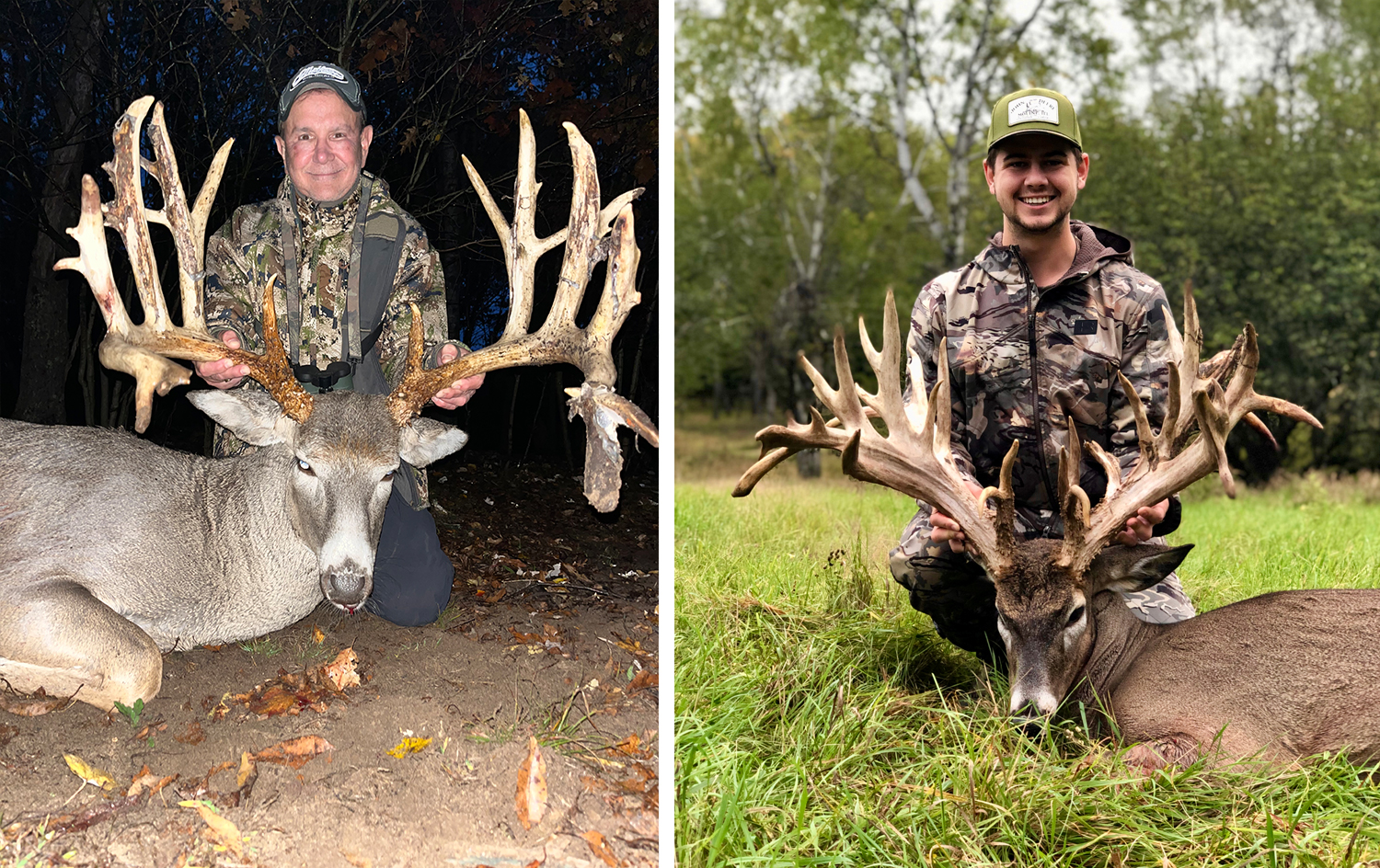
“There’s really nothing magical about it,” he said. “It’s simply a matter of intensively managing the herd and providing a good nutritional environment.”
Intensive management, he said, means culling inferior bucks while giving exceptional animals a chance to reach five and six years of age, when they’ve attained maximum antler growth.
As for nutrition, the other key element, years ago Pat sought the advice of Dr. Duane Ullrey, a leading cervid biologist at the Michigan State School of Agriculture. “I told him that we wanted to grow the biggest deer we could, generation after generation. He developed a special pellet formula, and then fifteen years ago, we teamed up with the folks at Purina to improve on that. The pellets we provide for our herd are the best in the business.” (Ed. Note: Sanctuary’s deer pellets are now produced by Amanda Feed.)
To grow really big antlers, deer need a steady, year-round diet of high-quality food. During the rut, they can lose 20 percent of their body weight and that comes just before winter, the deadliest season for northern whitetails. The bucks not only have to survive the searing cold and heavy snow but get through winter healthy enough to jump-start antler growth in the spring.
Shortly after sunrise the next day found Pat, Jon and me in another comfortable stand, peering into a thick fog. The few deer we were able to pick out appeared like gray wraiths gliding through the murk. Finally, as the fog began to lift, we spotted a wide-racked buck standing at the meadow’s edge.
“I really like him!” Pat exclaimed. “You want him?”
One would think that after a quarter-century of raising and harvesting huge whitetails, Pat Bollman would have lost some of his enthusiasm for big deer. Not a chance. Then . . .
“There’s another one! He’s almost as good!”
I kept moving my binocs back and forth between the deer, almost like watching a tennis match in the middle of the woods, then settled on the first buck, an unusually wide and symmetrical ten-pointer.
“He’s really wide, but his tines aren’t very long. I’d like to wait and see what else turns up,” I responded. “Besides, we can always come back and see him again . . . can’t we.”
“Don’t bet on it,” said Pat.
As it turned out, he was right. Sometime after lunch, I began to regret passing up the wide-horned buck, so I asked Jon if we could return to the same stand that afternoon. Although we stayed in the blind until dark, the buck never showed up.
About 1,500 whitetails thrive on Sanctuary’s four square miles, so it would seem that its big bucks would become easy targets for the hundred or so hunters who arrive each autumn. But that’s not the case.
“The whitetail is such a great game animal . . . so smart and elusive and with such keen senses,” Pat said. “Still, it never ceases to amaze me how our deer can simply disappear. Last fall, we knew of one buck with probably twenty points that would have scored two hundred or so. For two months we tried to kill him, but only two of our clients saw him and they were hunting management deer.”
It wasn’t until my last afternoon at Sanctuary that everything fell into place. Our stand overlooked a secluded meadow where a handful of does had gathered to feed. Once again Pat and I were jabbering away, swapping stories and talking whitetails, when Jon hushed us to be quiet.
“There’s a big one coming,” he whispered.
The buck came out hot, chasing a fickle doe that wanted nothing to do with him.
My first thought was that it was a mule deer because his rack was so incredibly wide and heavy. The old boy stayed right on the doe’s tail, nose down, lumbering across the meadow and back out through the dark wall of trees.
“Now that was a great buck!” Pat said with a wide smile.
“I glanced over at Jon, who was looking at me like a parent who’d just been handed a bad report card.
“I don’t know why I didn’t shoot,” I offered. “It all happened so fast, and I’m not really comfortable taking a running shot.”
“Maybe he’ll give up on that lady and come back to these does,” Pat added.
Once again his words were prophetic, for less than a minute later, the buck reappeared, striding stiff-legged toward the small group of does.
Jon hit his grunt call, and the buck stopped and looked up toward us. At my shot, he bolted away, but only to the edge of the woods where we found him sprawled over a bright carpet of newly fallen leaves, a tapestry fit for a king.
Hours later, Pat’s son and Sanctuary’s Operations Manager Ryan Bollman put a tape to my buck’s antlers. The nine-point rack had a 24-inch inside spread and bases fully six inches in circumference.
That evening, as the guides and hunters gathered by the campfire to relax and relive the day’s adventures, my six-year-old buck was the center of attention.
Our daily, after-the-hunt get-togethers were as much a part of the Sanctuary experience as the hunt itself. After stowing our gear, we’d head out to the warming fire where our hostesses, Nicole Fortin and Maegan O’Mara, would serve drinks while we munched on steamed crab claws or fried alligator tail fresh off the barbecue. Then, after an hour of friendly camaraderie, we would head inside the lodge for one of chef Dave McCall’s masterpieces, perhaps chicken bruscetta served with mostacdolo alfredo or flank steak ala Bollman, always served with our choice of fine wines.

The Sanctuary staff treats each hunter as if he were part of the family.
“What it all comes down to is that if we didn’t love doing this—if we weren’t a bunch of whitetail nuts—then we wouldn’t do it.”
The next morning, the few hunters who still remained in camp gathered on the front lawn where Staff Photographer Bill Honza took portraits of each man with his Gold Medal buck. When that was done, the entire Sanctuary staff — 16 dedicated young professionals who share the Bollman’s passion for whitetails—posed in front of the tall buck-pole and 12 magnificent animals. The deer averaged 250 pounds live weight and the largest rack grossed 212 points.
“We want every hunter to take home not only a great trophy, but memories of a great hunting experience,” said Ryan Bollman as we admired the huge bucks.
“One good indication that we’re succeeding is that of our fifty-seven Gold Medal hunters, all but one was with us last fall and some have booked for life.”
Ryan turned and looked over at the five hunters standing nearby. “Every one of these guys will be back next year.”
And the good Lord willing, so will I.
If You Want to Go:
Give Sanctuary Ranch a call at (231) 972-7722 or email sanctuary@sanctuary-ranch.com. Hunters can choose from three different price packages. There are no extras or surprises. They offer a 1 x 1 guided experience for each hunter to ensure success.
Note: This story originally appeared in the January/February 2006 issue of Sporting Classics.

